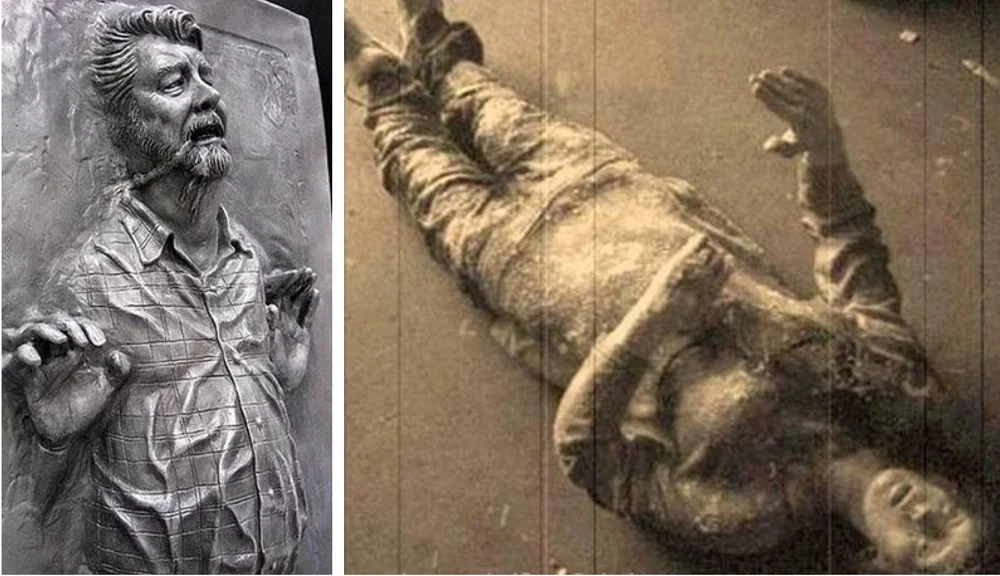
In the sweltering waters of the Strait of Malacca, sometime around 1947, a distress call crackled across the radios of passing ships. The message was short, chilling, and unforgettable:
“All officers including the captain are dead, lying in chartroom and bridge. Possibly whole crew dead.”
Then, after a pause:
“I die.”
What came next would become one of the most enduring mysteries in maritime history. A ghost ship. A vanished crew. A sudden explosion. And most strangely—no proof the ship ever existed at all.
So what really happened aboard the SS Ourang Medan? And why has this story survived for over 75 years, when every scrap of evidence seems to vanish under scrutiny?
Let’s go find the ghost.
Where the Story Begins
The first known mention of the Ourang Medan appeared in 1948 in a Dutch-Indonesian newspaper called De Locomotief. The article described a strange series of messages supposedly picked up by ships near Sumatra. According to the report, an American merchant vessel intercepted the distress call and found the Ourang Medan adrift.
When the rescue crew boarded, they found something no sailor ever wants to see: the entire crew dead. Eyes wide open. Arms frozen mid-reach. Faces twisted in horror. Even the ship’s dog was dead—snarling at something invisible. Before investigators could make sense of it, the ship reportedly caught fire and exploded, sinking into the sea.
It’s a gripping tale. But it comes with a catch: there’s no official record of any ship called the Ourang Medan in Dutch, Indonesian, American, or British maritime archives.

A Name With No Home
The name “Ourang Medan” means “Man of Medan” in Malay. Medan is a major port city on the island of Sumatra, a region crowded with trade routes and, at the time, colonial secrecy. But the Ourang Medan doesn’t appear in ship registries. Not in Medan. Not in Singapore. Not in Rotterdam. Not anywhere.
The ship’s story seems to come entirely from hearsay—passed from a missionary to a newspaper, then to American pulp magazines in the 1950s. Each retelling added something new: a mysterious fog on board, unexplained cold temperatures in the engine room, or reports of ghostly sightings years later.
There were no coordinates. No survivors. No wreck. Just a story.
Could It Have Been a Secret Smuggling Ship?
One theory suggests the Ourang Medan was real—but illegal. The ship may have been secretly transporting chemical weapons or toxic cargo, like potassium cyanide or nerve gas left over from World War II. If something leaked on board, the crew could’ve been poisoned in minutes. That would explain the frozen expressions, the lack of physical injuries, and the sudden explosion afterward.
If the ship wasn’t officially registered, governments might have denied its existence to avoid scandal. After all, moving chemical weapons through international waters would’ve violated global treaties—and left someone with a lot to cover up.
So maybe the Ourang Medan was buried to avoid answering bigger questions.
A Ghost Ship for the Cold War Era
The late 1940s were a time of global suspicion. The Cold War was heating up. Southeast Asia was a hot zone for intelligence operations, colonial unrest, and military leftovers from the Second World War.
It’s no surprise the Ourang Medan found a second life in Cold War pulp fiction. By the 1950s, the story showed up in American merchant marine journals and conspiracy magazines. Some claimed radiation was involved. Others hinted at supernatural causes.
It stopped being a news item and became a myth.
But Why So Much Detail?
Most hoaxes fall apart when you look closely. They’re vague. They contradict themselves. But the Ourang Medan story is strangely detailed.
It has:
- A full distress message.
- A timeline of events.
- Descriptions of the crew’s positions and expressions.
- A dramatic ending—explosion, fire, and a vanished ship.
That level of detail raises questions. Was it fabricated to distract from a real event? Or was it based on a different ship, with a false name slapped on to protect someone?
Some have even suggested the story was tangled up with a real ship called the Silver Star, an American vessel in the region around that time. But the Silver Star never reported an explosion. There’s no record of it rescuing or encountering a ghost ship.
Declassified… But Still a Mystery
In 2003, a declassified CIA memo surfaced, titled “The Mystery of the SS Ourang Medan.” It recounted the story in full but offered no conclusion. The agency didn’t investigate—it just filed the tale under unusual maritime phenomena.
Even the CIA didn’t know what to make of it.

The Ship That Haunts Because It’s Missing
So what are we left with?
- A ship with no registry.
- A crew with no names.
- An explosion no one saw.
- And a story that refuses to die.
The Ourang Medan is terrifying not because we know it happened—but because we can’t prove it didn’t.
That’s the kind of ghost story that sticks. It taps into our fear of the unknown: the sea as a place where rules break down, where silence spreads like fog, and where answers go under with the wreck.
Whether it was a Cold War cover-up, a chemical accident, or just a well-told lie, the Ourang Medan sails on—not through the sea, but through history’s blind spots.
And until someone finds a wreck… we’ll keep looking over our shoulder.
SOURCES
- Wikipedia
- Declassified CIA Memo: “The Mystery of the SS Ourang Medan” (1959)
- Proceedings of the Merchant Marine Council (1950s)





